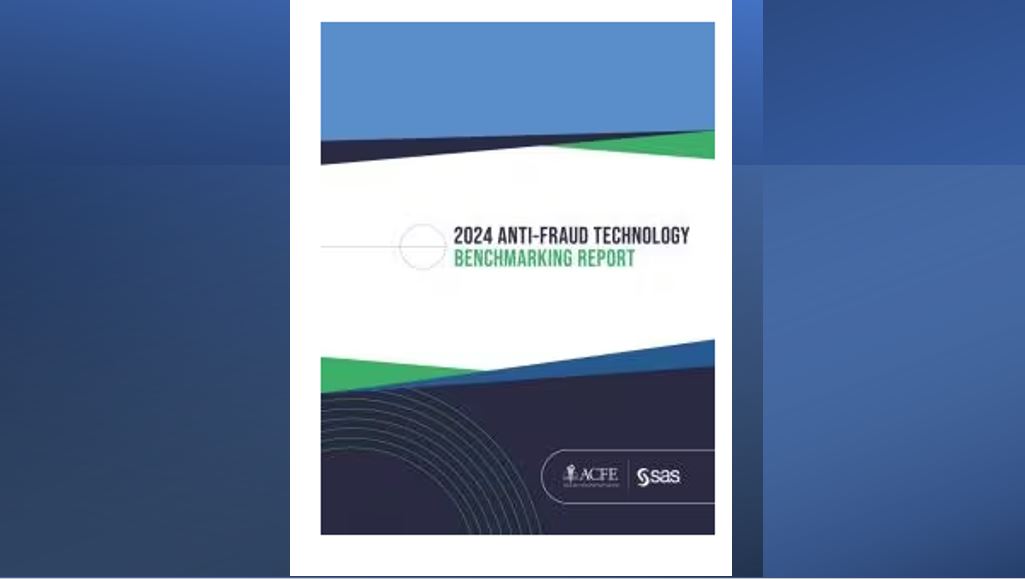Global survey carried out by ACFE and SAS reveals great enthusiasm for GenAI; in Latin America, 46% intend to adopt AI and machine learning in the next 2 years, a higher percentage than the global figure (32%)

Generative AI has captured the public imagination, and its power and potential appear to affect all areas. It's no surprise, then, that globally 83% of anti-fraud professionals plan to add the technology to their anti-fraud arsenal over the next two years, according to the latest anti-fraud technology study the Association of Certified Fraud Investigators (ACFE) and SAS.
O 2024 Anti-Fraud Technology Benchmarking Report is the third chapter in a global study initiated by ACFE and SAS in 2019. This edition features insights from approximately 1,200 ACFE members surveyed in late 2023, including professionals from Latin America. The survey data reveals the main trends in the evolution of combating fraud since 2019. Among them:
- There is more interest in artificial intelligence (AI) and machine learning (ML) than ever before. Currently, globally, 1 in 5 anti-fraud professionals (18%) counts AI/ML among their anti-fraud tools.
- Another 32% plans to implement these technologies over the next two years – a peak since the study began. In Latin America, this percentage is even higher: 46%. At this rate, the use of AI/ML in anti-fraud programs will practically triple by the end of next year.
- However, AI and ML adoption consistently falls short of expectations. Despite the enthusiasm, adoption of AI and ML for fraud detection and prevention has grown by just 5% since 2019. A number much lower than the predicted adoption rates revealed in the 2019 and 2022 studies (25% and 26%, respectively).
- Although the use of various data analysis techniques has stabilized, the application of biometrics and robotics in anti-fraud programs has consistently increased. The use of physical biometrics has grown by 14% since 2019, now cited by 40% of respondents globally, practically the same percentage presented in Latin America (39%). One in five respondents (20%) reported using robotics, including robotic process automation, compared to 9% in 2019. Use of these technologies is considerably higher in banking and financial services, with half (51%) using physical biometrics and a third (33%) using robotics.
“Access to Generative AI becomes very dangerous in the wrong hands”, says ACFE president, John Gill. “Three in five organizations expect to increase their budget for anti-fraud technology in the next two years. How resources are deployed will determine who will have the greatest advantage in what has become a technological arms race against criminal enterprises. It's an uphill battle if we consider that, unlike criminals, organizations face an additional challenge, which is to use these technologies ethically.”
“The excessive interest in advanced analytical techniques, in contrast to much more modest adoption rates, proves the complexity of scaling the AI and analytics lifecycle,” says Stu Bradley, senior vice president of risk, fraud and compliance solutions at SAS. “We also highlight the importance of choosing the right technological partner. AI and machine learning are not simple, plug-and-play applications. However, they offer benefits by deploying modularized solutions across the entire risk management spectrum on a single AI-powered platform. This is the SAS approach with SAS Viya, which is cloud-native and language-agnostic.”
Trends by industry, geography, Latin America data and more
To complement the benchmarking report, an online SAS data dashboard allows users to analyze survey data by industry, geographic region and company size. Data for Latin America is available on the dashboard.
Study participants work in 23 industries – predominantly banking/financial services and government/public administration (each representing 22% of participants), but also professional services (13%), insurance (5%), healthcare (4%), manufacturing (4% ), technology (4%), education (4%) and others. Organizations are present all over the world and vary in size, between less than 100 and more than 10,000 employees.
Read the report and visit the data dashboard at SAS.com/fraudsurvey to learn about anti-fraud technology trends across industries and opinions on:
- Data analysis techniques used by organizations to combat fraud.
- Risk areas where organizations employ data analytics to monitor fraud.
- Data sources used by organizations in anti-fraud initiatives and perspectives on data sharing consortia.
- The prevalence of case management and digital forensics/e-discovery software.
- Challenges faced by organizations when implementing new anti-fraud technologies.
- How generative AI is affecting organizations’ anti-fraud programs.
The Future of Generative AI: Boom or Collapse?
Will the enthusiasm of the professionals consulted in the survey make the implementation of generative AI in anti-fraud programs grow even further? Or will real-world challenges such as financial constraints, data quality and skills gaps inhibit the anticipated rise? Only time will tell, but organizations need to be very careful when adopting GenAI and other AI technologies. Responsible innovation It requires them to ask themselves not just if “we could” but if “we should”.
“The use of generative AI in anti-fraud initiatives could play a significant role in identifying anomalies, trends and indications in larger volumes of data with minimal resource concerns,” said one survey respondent. “However, the organization needs to ensure that appropriate guidelines are in place to minimize errors and biases.”
“Generative AI has come a long way in recent years, and it’s no surprise that organizations are incorporating it into their anti-fraud initiatives,” says ACFE Research Director Mason Wilder. “As a society, we are still discovering the advantages and disadvantages of using technology, but more organizations are taking the first steps. It will be interesting to see how quickly adoption occurs, both inside and outside the workplace, as the technology continues to progress.”
About the Association of Certified Fraud Investigators
Headquartered in Austin, Texas, USA, ACFE is the world's largest anti-fraud organization and is primarily responsible for anti-fraud training and education. With more than 90,000 members, ACFE is reducing commercial fraud around the world and inspiring public confidence in the integrity and objectivity of the profession. For more information, visit ACFE.com.












